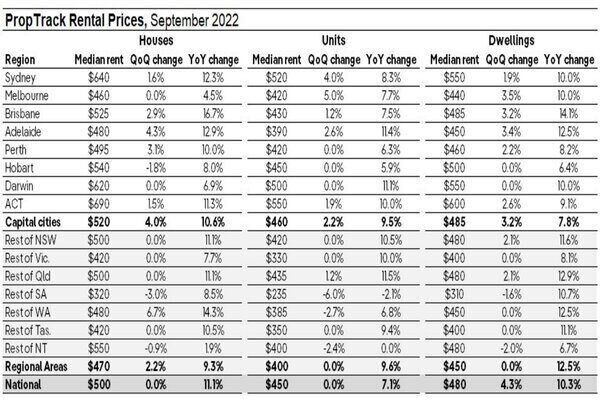Aussies are sent packing as rate and rent rises bite
Australians are now more likely to move homes due to the rising cost of living than they are because of Covid-19 related reasons, according to new data contained in the 2022 Muval Index report.
The survey of more than 400 by national online removalist booking platform Muval revealed one in 10 (11%) Australians have moved to slash living costs, while more than a third (36%) were likely to relocate to reduce expenses in the future.
The report also found that twice as many Australians would move due to the cost of living pressures (65%) as Covid disruptions (27%).
With the financial squeeze becoming so extreme in recent months, 40% of Australians said they would be prompted to consider moving house if their rent increased by $50 a week.
An interest rate rise of 2%, which is how much rates have already risen in 2022, was enough to make nearly a third (27%) of Australians pack up and move, most likely interstate.
Over a third (38%) of people who have relocated interstate said the move decreased cost of living pressures.
Muval Chief Executive Officer James Morrell said cheaper house prices, loss of employment opportunities or income, and rising electricity prices were also set to influence why and where Australians moved as living expenses continued to soar.
“Our data is telling us that moving is one way Australians’ plan to combat cost of living pressures with many households that are feeling the pinch willing to pack up their lives to find a new home with the right price tag,” Mr Morrell said.
“Over the last two years we saw Australians move to escape COVID-19 and now they are searching for a more affordable lifestyle.
“With inflation and interest rates rising rapidly, the cost-of-living crunch is set to disrupt millions of Australians and we expect there will be another wave of people looking to move house in the coming months.”
Rising rent prices expected to continue
New data contained in the PropTrack Market Insight Report showed median weekly rent prices have increased at the fastest quarterly pace on record – rising 4.3% over the September quarter, compared to 2.2% in the June quarter.
The historically high increase was seen across the rental market, with the national weekly median rent for houses now $500 and $450 for units.
Advertised rental rates also increased by 10.3% year-on-year – the largest annual rise on record – with prices set to continue climbing as rental conditions remain tight.
A 3.2% rise was seen across capital city rents for the quarter-on-quarter, as well as 7.8% higher year-on-year and 12.5% higher for regional rents.
Rents for houses have increased at a faster rate over the past year (11.1%) than unit rents (7.1%), with the national gap between the two remaining at $50 over the quarter – the widest differential on record.
Over the past year, rents for four-bedroom houses (12%), five-plus bedroom houses (11.4%) and one-bedroom units (11.1%) have recorded the greatest increases.

Source: PropTrack Market Insight
Rents are rising as a result of the ongoing low volume of stock that’s available for rent, paired with the strong demand for rental accommodation.
PropTrack says this is affording landlords the freedom to increase weekly rents.
Over the quarter, rental pressures were most prevalent for houses in regional WA and Adelaide, and was strongest for units in Sydney and Melbourne.
Houses and units in regional SA recorded the greatest softening of rents, as demand for rentals outside of Adelaide begins to ease.
“With the supply of rental stock remaining extremely tight and migration to Australia lifting, we anticipate rents to continue to rise over the coming quarters,” the report read.
Originally published by Savings.com.au




